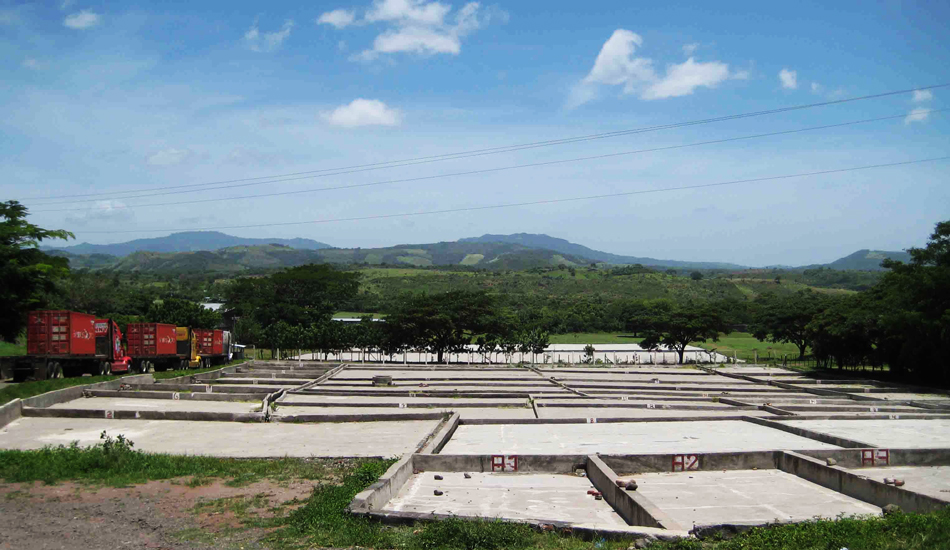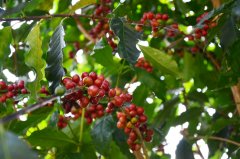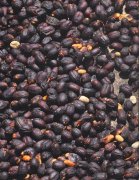Four major Nicaraguan coffee producing areas introduce high-quality Nicaraguan coffee planting and baking suggestions

For professional baristas, please follow the coffee workshop (Wechat official account cafe_style)
NICARAGUA
12 °9 °N 86 °16 °W
Nicaragua is one of the major coffee-producing countries, producing high-quality coffee. Nicaragua is mainly divided into four major coffee producing areas-Novo Sagovia (Nueva Segovias), Madagascar / Henodeka (Matagalpa / Jinotega), Borgo (Boaco) and Pacific Coast (Pacific). The planting height is the highest in the Nueva Segovia producing area, which is about 1450 Murray 2100 meters, and the coffee produced is the highest S.H.B. (Strictly Hard Beans). Covered with volcanic ash soil and shaded planting, it produces high-quality Nicaraguan coffee with a soft flavor. Nicaraguan coffee is the largest of all coffee beans, among which the Maragogype giant elephant bean is the most distinctive. Maragogype granules are larger than ordinary coffee beans, commonly known as elephant beans, with distinctive special aroma and round taste. The coffee tree in Matagalpa is an ancient bourbon tree species, which is usually planted on the hillside of 1200 murmur1500 Michael above sea level. It has been recognized as an excellent organic coffee at high altitude by the Organic crop improvement Association (OCIA). The general roasting degree of Nicaraguan coffee is recommended to be 11 Murray 12 minutes before and after the second explosion, but the time and temperature of roasting coffee beans will change according to the weather, humidity, residual temperature of the apparatus, etc., there is no absolute standard, it can only be adjusted by the experience and technology of the roaster, and because each baking stage of beans has its own charm. It is suggested that you can try different baking stages, I believe there will be different feelings. Nicaraguan coffee has been forgotten in Taiwan in recent years, and Nicaraguan coffee is rarely seen. In fact, the planting conditions of Nicaragua are not inferior to those of Central American countries, and the coffee produced in Nicaragua is characterized by a fresh and balanced taste; what is amazing is that the coffee produced in high altitude areas is light roasted-sweet and sour, soft, clean and bright; when roasted in medium baking-strong floral aroma, smooth taste Medium to deep baking-exudes nutty aromas, sweet, thick, mellow taste.
Attractions: natural scenery, mountains, forests, hot springs, coffee farms, waterfalls, handicrafts.
New Sagovia (Nueva Segovia) is located in the northern part of Nicaragua, bordering Honduras (Honduras), Madriz and Jinotega. The coffee produced stands out among tens of thousands of competitors in the International Cup Test Competition (Cup of Excellence) and is known as the top coffee producing region in Central America and Nicaragua; the new Sagovia producing area has an average elevation of more than 1450 meters above sea level, humid and cold all the year round, with a wide temperature difference in the morning and evening and misty, emitting the unique aroma of high-altitude coffee. A small number of indigenous tribes still live in the northern mountains of Nueva Segovia. Relics and sites of the pre-Columbian era have been found, but complete excavations have not yet been carried out. The city of Ocotal, located in Nueva Segovia, has a variety of hotels, restaurants, bars and small ballrooms. Se ñ oritas, just 5 kilometers from downtown Ocotal, has a beautiful natural area with impressive rock formations, water-rich rivers, and many species. Nueva Segovia is still a very natural area where you can see all kinds of birds and animals in the forest or crossing the road. Notre Dame de Guadarube-Catholic pilgrims come from all over the country, as well as tourists from as far away as Honduras. Tourists come here to thank the miracle and bring home the river that sheltered the temple as holy water.
Attractions: forest excursions, birds and wildlife, coffee estates, waterfalls, museums
Matagalpa, located in the north-central part of Nicaragua, has great scenery and forests. Matagalpa is one of the famous coffee producing areas in Nicaragua, where you can learn how coffee is grown, harvested and processed. The Matagalpa producing area is mountainous, surrounded by mountains, has relatively lower temperatures and a higher probability of rain than the capital Managua or Le ó n, and the climate is significantly different. The best growing environment for coffee is at a high altitude and in a cool place. Most coffee farms are located between 700m and 1350 m above sea level, with a temperature range of 16 °C-20 °C. These estates are often located on hillsides and forests. There is a wealth of ecology around the forest, such as woodpeckers, lizards, frogs, squirrels and many other species, all small residents of Matagalpa producing areas. The green mountains around the city of Matagalpa are a nature reserve with lush vegetation, mountain trails, streams and even waterfalls. The Nicaraguan tourism department has begun to promote Matagalpa's coffee visit route. Let visitors see the first-hand steps in the coffee farm and learn about the complete process of planting, harvesting, drying, roasting and grinding coffee beans.
Attractions: natural forests, coffee estates, canyons, beautiful buildings, museums, churches, traditional delicacies
Madriz (Madriz) is located in the mountains of northern Nicaragua, adjacent to Nueva Segovia, Jinotega and Esteli. This area is quiet and elegant, with the famous Somoto Canyon. The local production of coffee, the development of arts and crafts processing trade, as well as traditional delicacies. Madriz is characterized by a cool climate, beautiful roofs and white buildings with special tiles. There are also many coffee plantations, and the mountains are covered with verdant pine and oak forests. The capital of Madriz is located in Somoto and has an ancient church in the center of the city (the church still has antiquities and architectural structures preserved from the colonial era since 1661). Somoto also has a variety of interesting attractions. One of the attractions worth mentioning is the Piedra Pintada Museum, which is located in Somoto's Central Park.
Important Notice :
前街咖啡 FrontStreet Coffee has moved to new addredd:
FrontStreet Coffee Address: 315,Donghua East Road,GuangZhou
Tel:020 38364473
- Prev

Selection of Coffee and Orange Fruit Manor in Nicaragua report on the cup test of Kaddura's unique water-free sun treatment method
For the exchange of professional baristas, please follow the coffee workshop (Wechat official account cafe_style) El Naranjo Dipilto. Orange Fruit Manor (Best of Nicaragua winning Manor | Award record: 2016. 1st) Nicaraguan Coffee non-stick Sun treatment Variety: Caturra producing area: Nueva Segovia (New Sagovia) City: Dipilto Grade: Stric
- Next

Which country's Pacamara coffee beans are best to drink honey to deal with the flavor change of Pacamara coffee?
For the exchange of professional baristas, please follow the coffee workshop (Wechat official account cafe_style) El Naranjo Dipilto. Orange Fruit Manor (Best of Nicaragua winning Manor | Award record: 2016. No. 1) Nicaraguan Coffee Honey treatment Variety: Pacamara Pacamara Manor owner: Luis Emilio Valladarez Zelaya producing area: Nueva Segovia
Related
- Detailed explanation of Jadeite planting Land in Panamanian Jadeite Manor introduction to the grading system of Jadeite competitive bidding, Red bid, Green bid and Rose Summer
- Story of Coffee planting in Brenka region of Costa Rica Stonehenge Manor anaerobic heavy honey treatment of flavor mouth
- What's on the barrel of Blue Mountain Coffee beans?
- Can American coffee also pull flowers? How to use hot American style to pull out a good-looking pattern?
- Can you make a cold extract with coffee beans? What is the right proportion for cold-extracted coffee formula?
- Indonesian PWN Gold Mandrine Coffee Origin Features Flavor How to Chong? Mandolin coffee is American.
- A brief introduction to the flavor characteristics of Brazilian yellow bourbon coffee beans
- What is the effect of different water quality on the flavor of cold-extracted coffee? What kind of water is best for brewing coffee?
- Why do you think of Rose Summer whenever you mention Panamanian coffee?
- Introduction to the characteristics of authentic blue mountain coffee bean producing areas? What is the CIB Coffee Authority in Jamaica?

